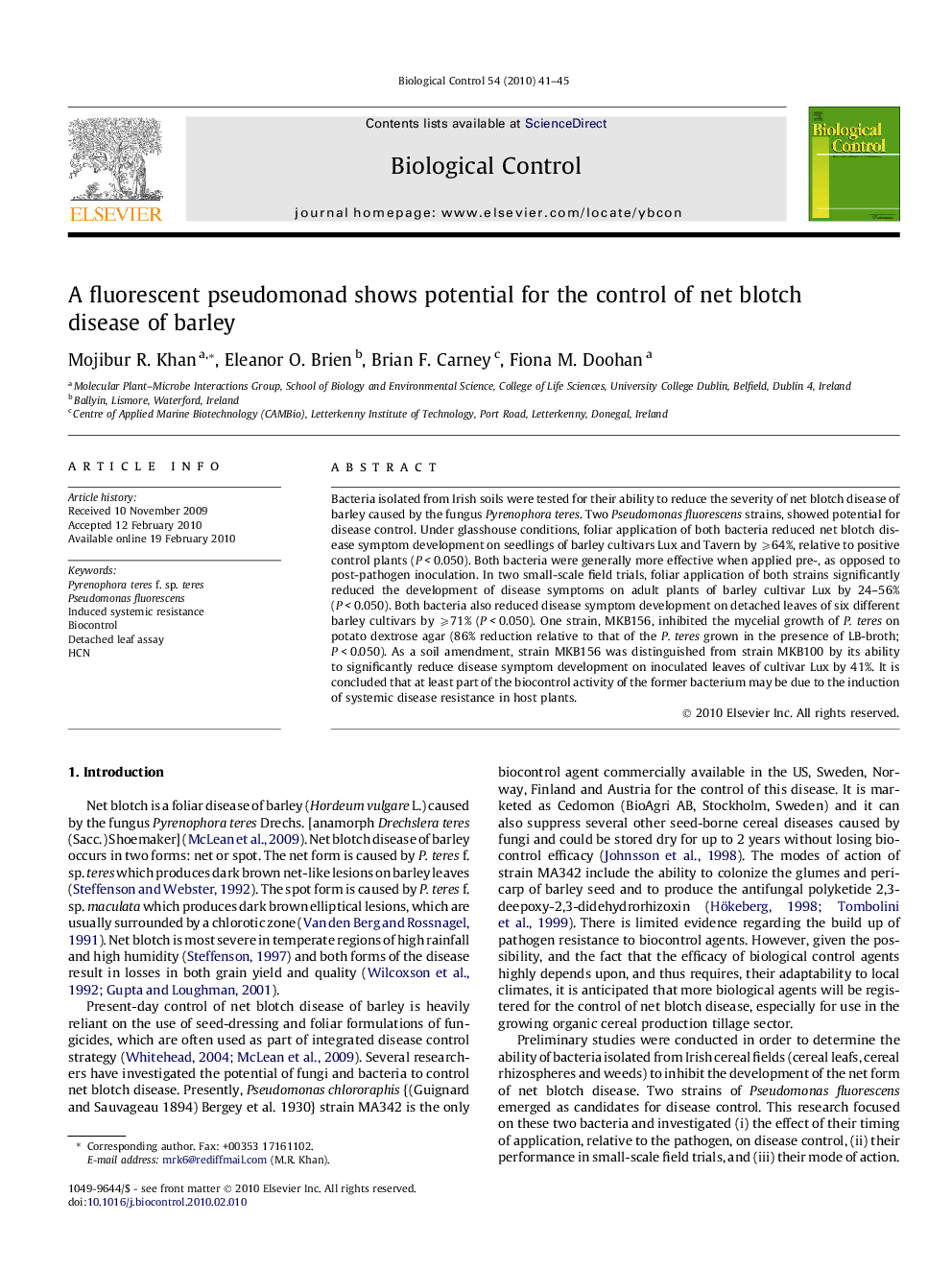| Article ID | Journal | Published Year | Pages | File Type |
|---|---|---|---|---|
| 4504497 | Biological Control | 2010 | 5 Pages |
Bacteria isolated from Irish soils were tested for their ability to reduce the severity of net blotch disease of barley caused by the fungus Pyrenophora teres. Two Pseudomonas fluorescens strains, showed potential for disease control. Under glasshouse conditions, foliar application of both bacteria reduced net blotch disease symptom development on seedlings of barley cultivars Lux and Tavern by ⩾64%, relative to positive control plants (P < 0.050). Both bacteria were generally more effective when applied pre-, as opposed to post-pathogen inoculation. In two small-scale field trials, foliar application of both strains significantly reduced the development of disease symptoms on adult plants of barley cultivar Lux by 24–56% (P < 0.050). Both bacteria also reduced disease symptom development on detached leaves of six different barley cultivars by ⩾71% (P < 0.050). One strain, MKB156, inhibited the mycelial growth of P. teres on potato dextrose agar (86% reduction relative to that of the P. teres grown in the presence of LB-broth; P < 0.050). As a soil amendment, strain MKB156 was distinguished from strain MKB100 by its ability to significantly reduce disease symptom development on inoculated leaves of cultivar Lux by 41%. It is concluded that at least part of the biocontrol activity of the former bacterium may be due to the induction of systemic disease resistance in host plants.
